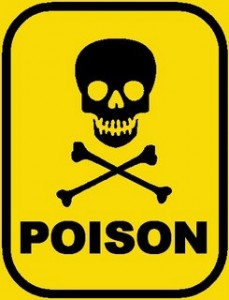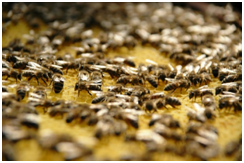22
Dec
New York to Mitigate Impact of Pesticides on Groundwater
(Beyond Pesticides, December 22, 2010)The New York Department of Environmental Conservation has created a pesticide use committee to look for ways to reduce the impact of more than 100 pesticides found in Long Island’s groundwater.
In an effort to strengthen the protection of the sole source aquifer that supplies Long Island’s drinking water, and area lakes, ponds and bays, the New York State Department of Environmental Conservation has announced the creation of a consortium of public and private stakeholders to develop a Long Island Pesticide Use Management Plan. The committee, which first met November 30, 2010, will create the Plan that focuses on mitigating the impact of pesticides on groundwater.
The plan, according to the Department’s Regional Director Peter A. Scully, is being prepared in response to the past discovery of more than 100 pesticides and pesticide breakdown products in Long Island’s groundwater. The overall goal of the plan, Mr. Scully said, is to prevent adverse effects to human health and the environment by protecting Long Island’s groundwater and surface water resources from pesticide contamination, while continuing to meet the needs of agricultural, residential, commercial, industrial, and institutional pest management.
“The importance of this effort is underscored by the broad representation of many diverse interests, all of whom agree that reducing the introduction of toxic materials into Long Island’s environment is of paramount importance,” said Mr. Scully. “Never before in history has such a capable and balanced group joined together to work cooperatively with the goals of strengthening the protection of our drinking water supply, and our surface waters.”
While Suffolk County Water Authority and other public water suppliers treat groundwater to remove contaminants, private wells that draw water from groundwater reserves ordinarily do not, which can pose a health risk. High levels of pesticides in drinking water can cause birth defects, damage to the nervous system and, in some cases, cancer. Visit Beyond Pesticides’ Pesticide Induced Disease Database for more information on pesticides and pesticide induced diseases. A key component of the plan involves examining preventive measures and steps that can be taken to minimize the potential for pesticides to impact groundwater resources. Potential measures could involve taking actions before pesticides are detected in groundwater or measures that can be taken after a pesticide is detected in groundwater resources.
The DEC-led committee, made up of government officials, pesticide applicators, agriculture representatives and environmentalists, is expected to release a final plan next year. The plan will shape the DEC’s policies for reducing pesticide-related threats to Long Island’s drinking water.
Every year, homeowners, farmers, groundskeepers and exterminators apply millions of pounds and hundreds of thousands of gallons of pesticides to control pests. Of 30 commonly used lawn pesticides, 17 are detected in groundwater, and 23 have the potential to leach. 2,4-D, found in weed and feed and other lawn products, is the herbicide most frequently detected in streams and shallow ground water from urban lawns. The committee will develop policies to encourage Long Islanders to manage pests with some of the least-toxic pesticides as well as environmentally-friendly methods that do not contain pesticides at all.
Previous U.S. Geological Survey data have found that U.S. waterways and groundwater are contaminated with toxic substances including fertilizers, pesticides, pharmaceuticals and other industrial chemicals. Chemicals, even those detected at low-levels, are increasingly being linked to serious health and developmental effects, well below U.S. Environmental Protection Agency (EPA) drinking water standards and levels of concern. According to a Beyond Pesticides report, Threatened Waters: Turning the Tide on Pesticide Contamination, over 50% of the U.S. population draws its drinking water supply from groundwater. Once groundwater has been contaminated, it takes many years or even decades to recover.
For more information on the effects of water contamination, read “Reproductive Effects Peak with Pesticide Exposure,” a talk given by Paul Winchester, M.D., at Beyond Pesticides April 2010 National Pesticide Forum at Case Western Reserve Medical School and published in our latest issue of Pesticides and You. For more information on drinking water and contaminants found in drinking water, read Beyond Pesticides’ “Threatened Waters,” and see the Pesticide Induced Disease Database for links between chemical exposure and diseases.
Source: NorthFork Patch











 registration” granted while EPA waited for Bayer Crop Science, the pesticide’s maker, to conduct a field study assessing the insecticide’s threat to bee colony health.
registration” granted while EPA waited for Bayer Crop Science, the pesticide’s maker, to conduct a field study assessing the insecticide’s threat to bee colony health.




